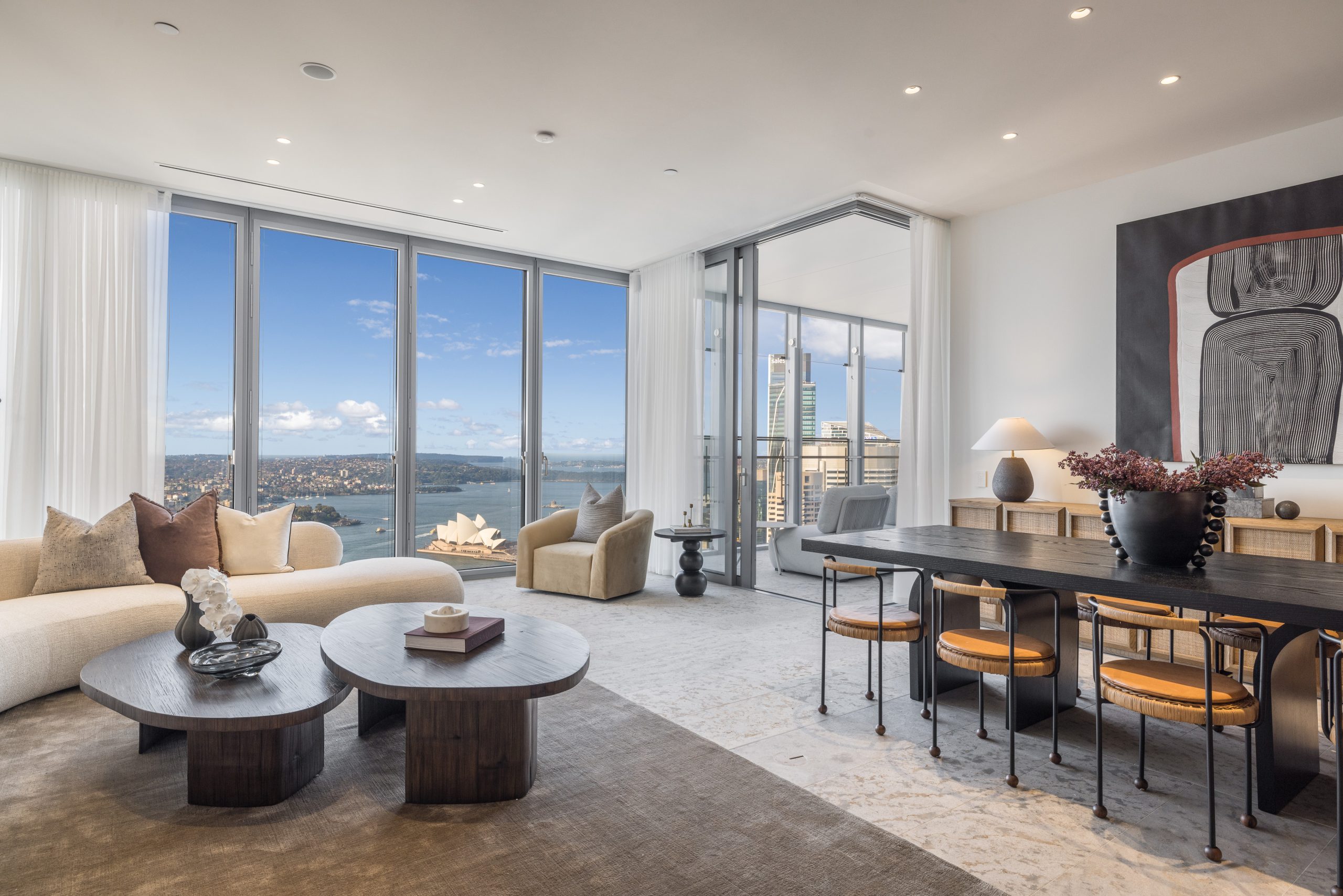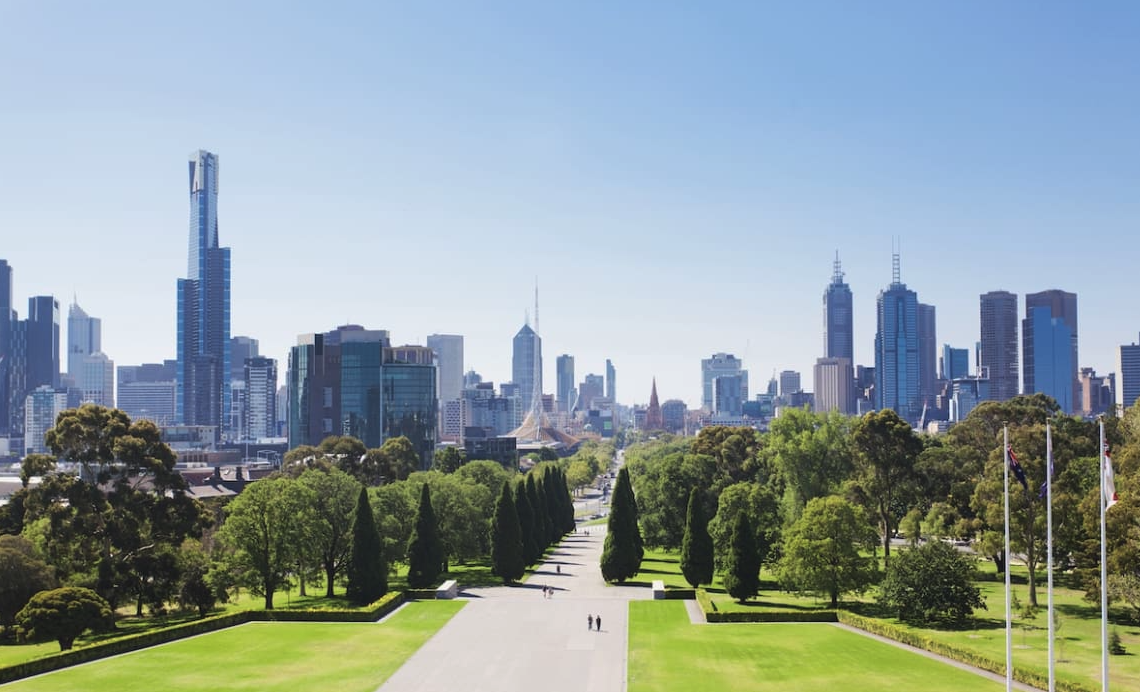INSIDE AUSTRALIA’S MOST EXCLUSIVE REAL ESTATE CLUB
Off-market real estate is the gold standard in luxury, where privacy, prestige and exclusivity come first.
In a world saturated with luxury listings, glossy marketing campaigns and high-profile property sales, there remains a quietly powerful corner of the real estate market—one that thrives on trust, privacy, and exclusivity.
At the centre of this discreet world is Monika Tu, Founder and Director of the Black Diamondz Group, widely recognised for leading the revolution of global buyers into Australia’s ultra-prestige property market.
Tu, whose clients include billionaires, celebrities, and political leaders, operates in a rarefied space where the most desirable homes are never advertised, and deals are often done before the broader market even knows a property is for sale.
Off-market real estate isn’t a niche for her—it’s the gold standard.
“In the ultra-high-net-worth space, discretion is not a luxury — it’s a necessity,” Tu explains. “My clients are often celebrities, global business leaders, and influential investors who value privacy above all else. Off-market deals provide that veil of exclusivity.”
But for Tu, the allure of off-market transactions isn’t just about secrecy — it’s about substance.
A growing appetite for luxury
These clients, she says, aren’t merely buying houses. “They are acquiring legacies, generational wealth, and status symbols — and that level of prestige is rarely found on public portals,” she says,
As Australia’s luxury market tightens amid limited premium stock and global volatility, the appetite for private, bespoke deals is rising.
“In 2025, especially with ongoing market volatility and limited premium stock, off-market opportunities have become even more appealing,” she says. “They offer a sense of control in an otherwise competitive market.”
So how do these deals begin?
“It always starts with trust,” says Tu. “I often say that luxury real estate isn’t just about property — it’s about people. The best off-market transactions begin through curated relationships: long-standing connections, private referrals, and personal introductions.”

Privacy, Exclusivity & Power
The advantages of transacting away from the public eye are threefold, Tu says: “privacy, exclusivity, and negotiating power.”
Privacy, of course, is paramount. “It ensures they can transact without media speculation or market noise — especially important for politically exposed persons or high-profile figures.”
Exclusivity, meanwhile, creates cachet. “They’re accessing real estate most will never know is available — these are trophy assets, often passed quietly between elite hands.”
And for sellers, it’s an elegant way to test the market — discreetly. “Avoiding public listings protects them from over exposure and allows them to test the market without commitment,” she says.
“It also creates a sense of prestige. Some of our most successful sales have been whisper listings — sold to the right buyer, at the right time, for the right price.”
Although identities remain confidential, one such sale involved a waterfront estate in Sydney’s Eastern suburbs valued at more than $60 million.
“The property had never been formally listed — it belonged to an ultra-private family who only wanted it shown to a ‘handpicked few.
“The buyer was an international billionaire relocating to Australia under the Significant Investor Visa program,” Tu says.
The deal, Tu recalls, was incredibly complex. “We negotiated over midnight calls, coordinated legal teams across three time zones, and even sourced a bespoke designer to help the buyer envision the home’s potential. We had it sold — quietly and cleanly — within three weeks.”
The Invisible Market
Tu says the off-market trend has only gained momentum in recent years. “In 2024 and 2025, we’ve seen record levels of wealth transfer, tighter stock levels at the top end of the market, and an increased appetite from overseas buyers — particularly from Asia and the Middle East — who want access to Australia’s safest, most prestigious homes.”
But there’s also a cultural shift driving this appetite for discretion. “The rise of social media, digital surveillance, and a 24/7 news cycle has made UHNWIs more protective of their privacy than ever,” Tu says. “Off-market is no longer niche — it’s the gold standard for how the elite transact.”
So what advice does she give those considering a step into this rarefied world?
“My number one piece of advice: choose your agent carefully,” Tu says. “Off-market success doesn’t come from slick marketing — it comes from relationships, insight, and discretion.”
“For buyers, be clear on what you want, be patient, and align yourself with someone truly embedded in the luxury space. This is not the world of open inspections and price reductions — it’s about timing and precision.”
And for sellers? “Understand that pricing power is maintained through exclusivity. Don’t feel pressured to go public unless it’s strategic. With the right network, your buyer is already out there — and they’ll pay a premium for privacy.”
Records keep falling in 2025 as harbourfront, beachfront and blue-chip estates crowd the top of the market.
A divide has opened in the tech job market between those with artificial-intelligence skills and everyone else.
The 2026 McGrath Report warns that without urgent reforms to planning, infrastructure and construction, housing affordability will continue to slip beyond reach for most Australians.
Australia’s housing market has reached a critical juncture, with home ownership and rental affordability deteriorating to their worst levels in decades, according to the McGrath Report 2026.
The annual analysis from real estate entrepreneur John McGrath paints a sobering picture of a nation where even the “lucky country” has run out of luck — or at least, out of homes.
New borrowers are now spending half their household income servicing loans, while renters are devoting one-third of their earnings to rent.
The time needed to save a 20 per cent deposit has stretched beyond ten years, and the home price-to-income ratio has climbed to eight times. “These aren’t just statistics,” McGrath writes. “They represent real people and real pain.”
McGrath argues that the root cause of Australia’s housing crisis is not a shortage of land, but a shortage of accessibility and deliverable stock.
“Over half our population has squeezed into just three cities, creating price pressure and rising density in Sydney, Melbourne and Brisbane while vast developable land sits disconnected from essential infrastructure,” he says.
The report identifies three faltering pillars — supply, affordability and construction viability — as the drivers of instability in the current market.
Developers across the country, McGrath notes, are “unable to make the numbers work” due to labour shortages and soaring construction costs.
In many trades, shortages have doubled or tripled, and build costs have surged by more than 30 per cent, stalling thousands of projects.
Need for systemic reform
McGrath’s prescription is clear: the only real solution lies in increasing supply through systemic reform. “We need to streamline development processes, reduce approval timeframes and provide better infrastructure to free up the options and provide more choice for everyone on where they live,” he says.
The 2026 edition of the report also points to promising trends in policy and innovation. Across several states, governments are prioritising higher-density development near transport hubs and repurposing government-owned land with existing infrastructure.
Build-to-rent models are expanding, and planning reforms are gaining traction. McGrath notes that while these steps are encouraging, they must be accelerated and supported by new construction methods if Australia is to meet demand.
One of the report’s key opportunities lies in prefabrication and modular design. “Prefabricated homes can be completed in 10–12 weeks compared to 18 months for a traditional house, saving time and money for everyone involved,” McGrath says.
The report suggests that modular and 3D-printed housing could play a significant role in addressing shortages while setting a new global benchmark for speed, cost and quality in residential construction.
Intelligent homes
In a section titled Weathering the Future: The Power of Smart Design, the report emphasises that sustainable and intelligent home design is no longer aspirational but essential.
It highlights new technologies that reduce energy use, improve thermal efficiency, and make homes more resilient to climate risks.
“There’s no reason why Australia shouldn’t be a world leader in innovative design and construction — and many reasons why we should be,” McGrath writes.
Despite the challenges, the tone of the 2026 McGrath Report is one of cautious optimism. Demand is expected to stabilise at around 175,000 households per year from 2026, and construction cost growth is finally slowing. Governments are also showing a greater willingness to reform outdated planning frameworks.
McGrath concludes that the path forward requires bold decisions and collaboration between all levels of government and industry.
“Australia has the land, demand and capability,” he says. “What we need now is the will to implement supply-focused solutions that address root causes rather than symptoms.”
“Only then,” he adds, “can we turn the dream of home ownership back into something more than a dream.”
Australia’s market is on the move again, and not always where you’d expect. We’ve found the surprise suburbs where prices are climbing fastest.
BMW has unveiled the Neue Klasse in Munich, marking its biggest investment to date and a new era of electrification, digitalisation and sustainable design.




















